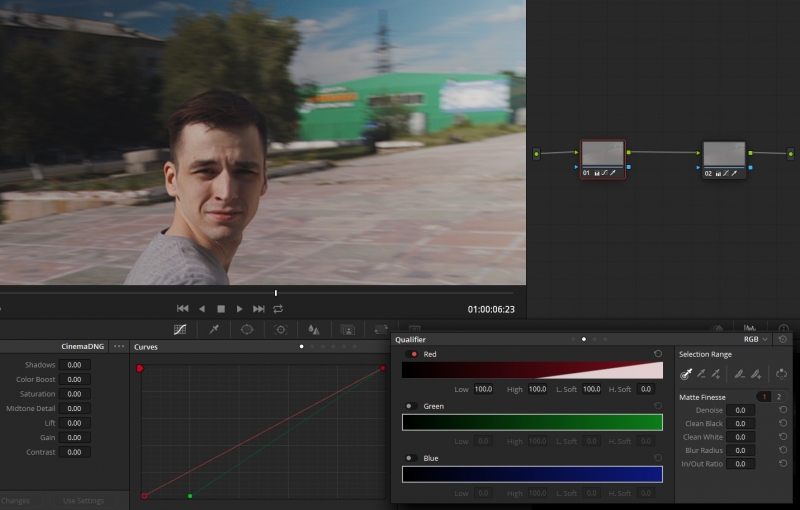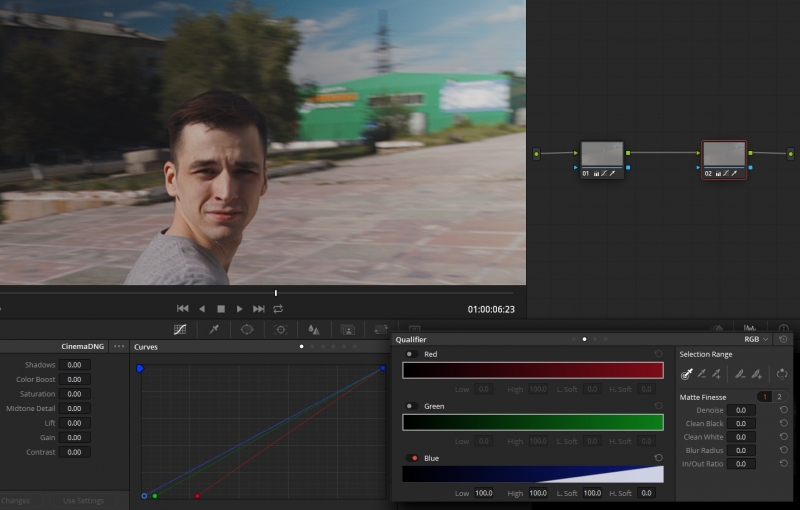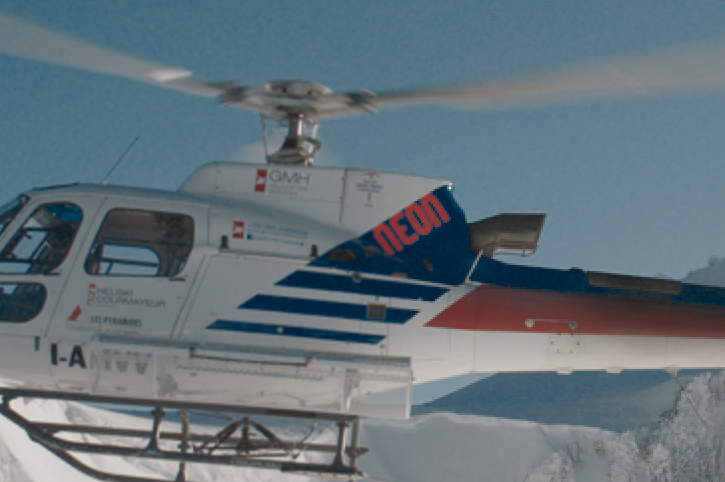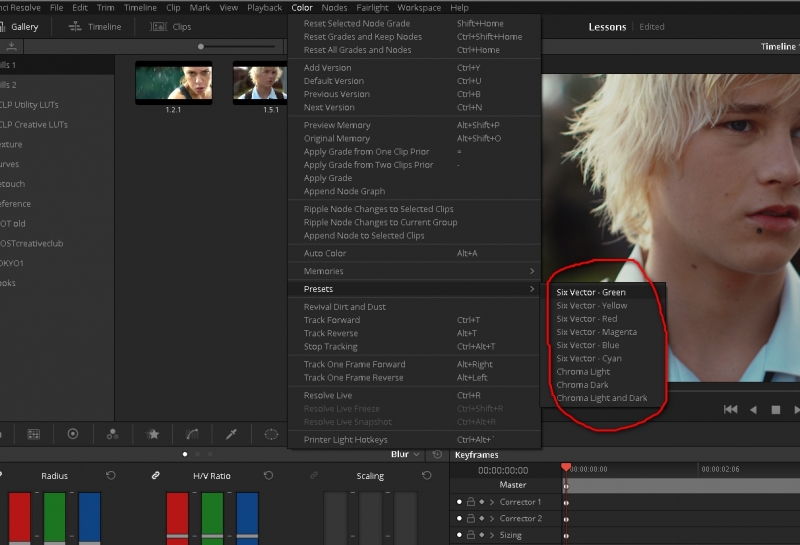-
Posts
169 -
Joined
-
Last visited
Content Type
Profiles
Case studies - Free
Case studies - Premium
Resources
Insider
Courses
Forums
Store
Everything posted by Anton Meleshkevich
-
@bruce alan greene Thank you so much! Finally somebody explained me this thing! I usually use matrix, I've created from colorchecker and macbech official data. We shot it on our camera at daylight at exposure which is perfectly match macbeth gray squares if footage would in rec709. Then I adjust WB in RAW accurately watching at gray squares on colorchecker. Then I create gamut conversion matrix in tools like 3D LUT Creator. So I get our camera to sRGB gamut conversion matrix. I remebmer about gamma influence to colors and so on. Finally i get perfect Rec709 image exposed and color-gamut-transformed correctly. And then I get those unpleasant yellowish greenery. But now I understand that this is normal. I understand that I didn't miss something. And now I can move on and try to deal with it or to create log-to-rec conversion luts by myself using colorchecker and third party apps which is much more natural compared to 2383 LUT. Thank you, Bruce!
- 29 replies
-
- 2383
- kodak vision
-
(and 2 more)
Tagged with:
-
Guys, thank you all for the replies. I'm not a native english speaker so I can sound rude. In my language common way to make speech sound respectful is to use articles, but not words like "please"or similar. So I'm sorry if I sound rude I try to speak English correctly.
- 29 replies
-
- 1
-

-
- 2383
- kodak vision
-
(and 2 more)
Tagged with:
-
I'm sorry, I didn't want to be rude. I've been google it for months with no success. I'm just trying to understand this thing and everything I get is "LUTs can't make film look" which is a standard answer when anybody ask something about film print LUTs. Talking about input for Steve Shaw LUTs: "Note: The Free LUTs provided here expect the underlying image to be 'corrected' for a Rec709 display, with the image either being a LOG gamma image, as defined by the standard Cineon video Log format (which is basically Arri Log C), or have a gamma of 2.4, both with a Rec709 gamut. If you have source images that are of a different gamut or gamma (say, raw camera images that have proprietary gamma and gamut values), they will need to be 'corrected' to match Rec709 gamut with Log C or 2.4 gamma to attain the correct end result." https://www.lightillusion.com/free_look_luts.html This is what I meant, talking this: "...are actually created to use with REC709 GAMUT and cineon or LogC gamma..." Seems like this is what I want to understand: I want to understand workflow for real 2383 print film. Is it's colorimetry becomes corrected to usual colors by the theater projector? I guess, no. Because preview LUTs still have this yellowish colorimetry. May be this yellowish thing corrected by input film stock colorimetry wich makes greenery more cold? And it becomes normal after 2383 filmprint? Seems like this isn't true. Because Steve Shaw LUTs are created for rec709 Gamut input. I'm trying to figure out, why 2383 looks so strange, but hollywood movies still look natural. May be I missing some simple step that makes 2383 LUTs look normal? Or the typical way of working is just add 2383 preview LUT and fix all the yellowish greenery using various color correction tools? I can fix it easliy. But I want to know if it is the correct workflow. Usually I grade in LogC through 2383-log-to-rec Steve Shaw LUT or D65 Davinci Resolve built-in preview LUT. I grade music videos for youtube and TV. And I always fix yellowish greenery using hue curve. Is it correct way of fixing this? To understand how to fix this I need to know why there is no any yellowish greenery in hollywood movies.
- 29 replies
-
- 2383
- kodak vision
-
(and 2 more)
Tagged with:
-
@bruce alan greene, you are wrong. @Steve Shaw LUTs, for example, are actually created to use with REC709 GAMUT and cineon or LogC gamma. The thread isn't about "hey guys I wanna get some film look!". It's about yellowish greenery on a REAL 2383 print film. And if you worked with real 2383 and you can say that there is no any yellowish greenery on that, please tell it me. So I will know that this yellowish greenery is just a part of those particular films in those particular conditions, the LUTs based on. @Marc Wielage , I have read a lot of your posts about LUTs on other forums, you always say that those LUTs are just print of one day's process. And another day colors will be different. I trust you and I understand these things very clearly. But my question is about yellowish greenery. Is it typical thing for REAL 2383 or this is just this LUTs thing?
- 29 replies
-
- 2383
- kodak vision
-
(and 2 more)
Tagged with:
-
I need some time to dive in and understand what you did
- 29 replies
-
- 2383
- kodak vision
-
(and 2 more)
Tagged with:
-
May be someone will find it helpful. For Davinci Resolve 15. Set the node's gamma to linear. Set timeline colorspace to source footage colorspace. Adjust gain. This is 100% similar to adjusting it in RAW. For other apps. Transform source footage gamma to linear. Then adjust exposure using gain. Then transform gamma back to source footage gamma. But unfortunately adjusting WB this way isn't working. So I'm going to use printer lights (offset) for WB and trying to find something what will be 100% similar to RAW.
-
All the 2383 print film LUTs, I worked with, shift all the greenery towards yellow. But movies, where this print film was used, have green greenery. I tried to use and compared Davinci Resolve LUTs, Steve Shaw LUTs, ImpulZ LUTs and so on. So it seems like this is typical thing for 2383 colorimetry. Yes, you can say that LUTs can't be close to film and every time colors are different. But as far as I know, Kodak provided it's colorimetry to Steve Shaw (light illusion). So I think I can trust it's yellowish thing. I use macbeth colorchecker, set up an exposure, contrast as accurate as possible, adjust WB very accurately. Also I tried LogC gamma, tried cineon gamma, tried not to use wide gamut color spaces and used (as it's recommended) rec709 gamut with cineon gamma and so on. But I still get yellowish greenery. Also I tried to apply these LUTs to test pictures to see what's exactly going on and did a lot of other things. All these LUTs ACTUALLY shift greenery to yellow. I can fix the greenery quickly by using hue curve. But I guess this is not the correct way to get green greenery. I saw a lot of hollywood movies with 2383 print film, but most of them have usual green greenery. Is it a standard operation with 2383 print film to adjust greens using hue curve? Or may be there is some matrix I should apply before, or anything else? I'd like to know what is correct way of working with 2383 print film. I can fix it easily without any artifacts using, for example 3d lut creator and it's AB curves in YUV mode, but I want to know the correct way. I guess solution is simple and obvious. And I know that using LUTs for look purposes isn't what cool colorists do (actually they do), but this answer makes sense only if actual 2383 film print DOESN'T shift green to yellow. Otherwise I'm trying to solve the same thing, what happens with a real 2383 print film.
- 29 replies
-
- 2
-

-
- 2383
- kodak vision
-
(and 2 more)
Tagged with:
-
Scratch 9 is out. Still no groups?
-

RGB Qualifier
Anton Meleshkevich replied to Anton Meleshkevich's topic in Editing , Color grading & Finishing
There is no clipping. RGB mask prevents from any clipping. -
Fusion is easier to learn.
-
Does anybody use RGB Qualifier? I know just one technique where it's used. Everything is on screenshots (1st still is "before". 2nd and 3rd are the same). This is NOT an example of a good grading, I know, that before-still is better . I just share a way of how RGB qualifier can be used. In this example in first node RGB curves make shadows more reddish (blue curve is hidden under green one). But it is applied less on less reddish and applied more on more reddish pixels. The same thing is with the blue (2nd node). Also curves set in this way to back neutral colors to neutral. Luma mixing set to zero just in case. Why RGB mask? Because it's very gentle. Just look at it's matte. But I'm sure, there is a lot of another techniques, I'd like to learn, where RGB Qualifier is used.
-

stylize a grade, how and when
Anton Meleshkevich replied to Orash Rahnema's topic in Editing , Color grading & Finishing
I think, typical workflow for big movies is: 1. Set up contrast (I mean all luminosity things like exposure etc) 2. Tint picture mood using printer lights. 3. Optionally Shift blue hue a little to a complementary color of the skin tone (line). 4. Log-to-whatever LUT or custom curves and gamut conversion May be a little bit of LGG toning. As far as I know, all teal orange things made using color temperature, saturation and some FPE LUT that slightly shifts everything complementary from gray to cool and warm sides. Qualifier for teal orange is a very time consuming process. So I guess it is avoided every time it's possible to avoid. If you got a good contrast, it seems like no matter what you do with colors - it's still looking good. -

B/W Rgb values in film stocks
Anton Meleshkevich replied to Abby Bader's topic in Editing , Color grading & Finishing
@Marcelo CosmeAdd spaces. AGFA 200X0.180.410.41 is AGFA 200X - 0.18 - 0.41 - 0.41 -

Beauty retouching
Anton Meleshkevich replied to Thomas Singh's topic in Editing , Color grading & Finishing
Mocha Pro => Clean Plate => Photoshop -
I think, you can use built-in OFX colorspace transform plugin for that.
-

Sharpness and resolution
Anton Meleshkevich replied to Anton Meleshkevich's topic in Editing , Color grading & Finishing
Thank you, Abby! I'm not a native english speaker, so could you please explain a bit more? Heavier contrast in the mid tones - is what I should to get? Or I should to avoid it? I'm a little confused. Sometimes I desaturate timeline node at first. And then I adjust exposure and contrast of all the clips. Is it a good idea or it can force me to make more contrasty images than I need? P.S. "THEN" of course. -
Sometimes I can get those big hollywood movies sharpness, sometimes I can't, while camera is still the same. How do you get this professional looking soft sharpness? I don't know how to describe it. Just look at any still from Company3 colorists' instagrams. And what about resolution? You get 6k footage and xml from editor. If you create 2k (or HD) project, you acually work with downscaleed footage. Which is ok for color (2.7k*0.7=1080p of real colored pixels and so on), but is it ok for sharpness? Or you create 6k project and after all the grading and sharpness you render it. And THAN you downscale it to destination resolution? And one question about music videos. Clients for some reason always want me to render final master in 4k for youtube. But 99.9% music videos on youtube still in HD. I mean most expensive music videos are still in HD? Is it because youtube downscales video from 4k (UHD) to HD not so accurate as, for example, davinci resolve?
-

Reduce edge contrast
Anton Meleshkevich replied to Thomas Singh's topic in Editing , Color grading & Finishing
I did somethig wrong. Forget about the picture. I'm trying to figure it out. For some reason grabbing a still makes it sharper than on preview window. But decoding set to full res. However, it works. But the difference is not so noticeble as on the picture. Any thoughts about this strange thing? Why grabbed stills sharper than preview window? -

Reduce edge contrast
Anton Meleshkevich replied to Thomas Singh's topic in Editing , Color grading & Finishing
Arri RAW 6.5k footage. DCI 2k timeline. 200% zoom. Look at "NEON" lable. Left side of the image - smoother resize filter + sharpen at 48 (where 50 is default). Right - sharper resize filter. -

Reduce edge contrast
Anton Meleshkevich replied to Thomas Singh's topic in Editing , Color grading & Finishing
In image scaling settings. When resolve downscales a footage, it uses different filters. Default is sharp as far as I know. -

Reduce edge contrast
Anton Meleshkevich replied to Thomas Singh's topic in Editing , Color grading & Finishing
Also using "Smoother" resize filter can help. -

Red or Alexa?
Anton Meleshkevich replied to Tom Evans's topic in Editing , Color grading & Finishing
I prefer Alexa. RED's camera raw settings become more and more complicated. It is harder to keep everything standardized. -

Low luminance, high saturation
Anton Meleshkevich replied to Emily Haine's topic in Editing , Color grading & Finishing
Isn't this a typical way of film affecting on an image? Shadows are more saturated. Highlights are less. -
Or you're talking about "Selective Color" ? Or may be about "Camera Raw filter" sliders? HSL/Saturation uses chroma qualifying in photoshop.
-






